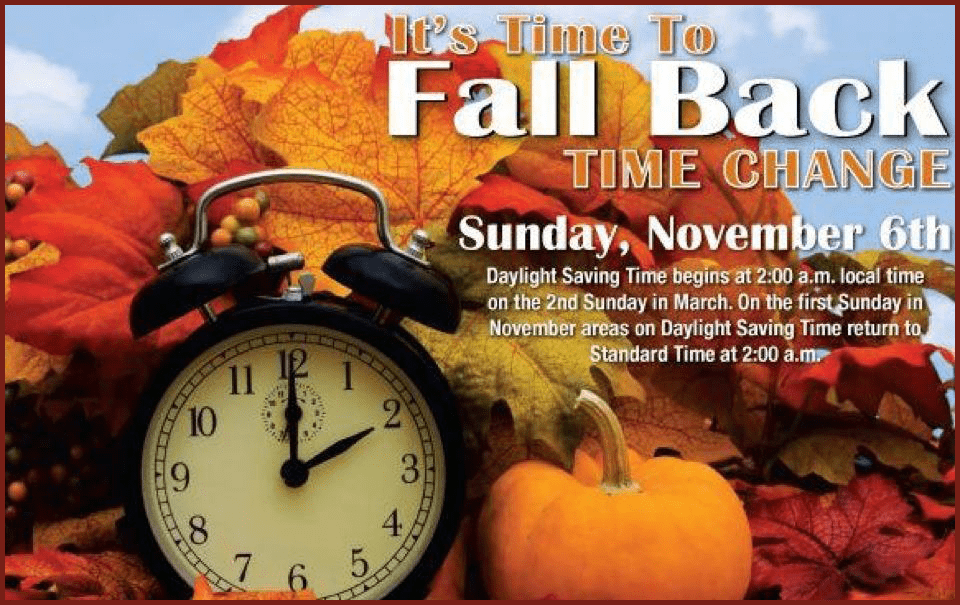Brief History of Daylight Savings Time

Daylight Savings Time… How Did We Get Here?
November 6th is fast approaching and 2022’s edition of Daylight Savings Time (DST) will come to an end as we “fall back” the clock. It’s easy enough to take it for granted today, but we didn’t always “spring forward” the clock during winter’s waning days on the second Sunday in March and then back on the first Sunday in November. In fact, for much of the 20th century, the practice was downright controversial.
The premise for DST is simple enough. As the days start getting longer, you shift the clock by one hour. This means more of the additional daylight occurs in the evening, when more people can enjoy it. A similar idea was first floated way back in 1784 by one of our country’s most venerable innovators, Benjamin Franklin, as a way to save money on candles. The difference? Franklin didn’t want to change the time. He wanted to change the time people woke up… by firing cannons! As it turns out, shifting the clocks was an easier sell and DST was first put into practice by the Germans in 1916 during World War I as an energy saving measure. Other countries—including the United States—quickly followed suit.
Its implementation caused a firestorm, though, here in the States. Within a year of its adoption, Congress repealed the practice, despite a presidential veto and for the next five decades, aside from a brief period during WWII , it was up to state and local governments to decide whether they would practice Daylight Saving. Some did, some didn’t, which resulted in confusing times – no pun intended!
Congress eventually put an end to the confusion in 1966 by passing the Uniform Time Act. “Uniform” time was not unanimous however, with exceptions being made for a few holdouts like Indiana, Michigan and a few others. Today, Arizona and Hawaii still don’t observe DST. Finally, in 2005, Congress revisited the law and moved the start of DST up from the first Sunday in April to the second Sunday in March.
For the most part, Daylight Savings no longer stirs the controversy it once did, but that doesn’t mean DST doesn’t still have its detractors. Some studies have shown that the shift can lead to poor health effects – even a spike in heart attacks. Health concerns aren’t the only reason people object. Sky and star gazers say it also poses a problem for thousands of amateur astronomers. Their general complaints center on in the summertime it gets dark so late in the northern states that it doesn’t leave many hours for stargazing.
How To Help Your Body Adjust To Time Changes
When it comes to adjusting to time changes, there are several things you can do to prepare yourself for an upcoming DST switch or the reversion back to non-DST time:
- If you’re moving the clocks forward, take a 15-20 nap in the afternoon on the day before, and the day after if you feel you could use it.
- The night that you’re moving the clocks forward, use a natural sleep aid or eat foods that help facilitate an earlier onset of sleep and deeper sleep.
- For a week or two leading up to a time change, gradually add or subtract a few minutes to your bedtime to make the acclimation less difficult on the day of the change.
- The morning after “springing forward” expose yourself to sunlight in the morning, and if possible, exercise early (and outside is better).
FOOTNOTE
What’s Up With The 2 A.M. Timing Of Setting Clocks Back?
The reason Daylight Saving Time starts at 2 a.m., rather than midnight, is all thanks to the railroads: Amtrak, specifically. When the country first experimented with Daylight Saving Time in 1918 during World War I, there were actually no trains that left New York City at 2 a.m. on a Sunday. Turns out the Sunday morning at 2 a.m. timing was when they would interrupt the least amount of train travel around the country. There were even fewer freight trains in the early 20th century than there are today, so it made the most sense from the perspective of being the least disruptive. So, that’s the reason for what appears to be such an arbitrary and crazy time.
This article is for informational purposes and should not replace advice from your doctor or other medical professional.
Excerpted from multiple blogs.
This blog provides general information about sleep and sleep products. The words and other content provided in this blog, and in any linked materials, are not intended to replace a one-on-one relationship with a qualified heath care professional. This blog should not be construed as medical advice or used to diagnose, treat, prevent or cure any disease or condition. If the reader or any other person has a medical concern, he or she should consult with an appropriately-licensed physician or other health care professional. This blog is not a substitute for professional medical advice, diagnosis or treatment, and should not be relied upon to make decisions about your health or the health of others. Never disregard professional medical advice or delay in seeking it because of something you have read on this blog or elsewhere on bettersleep.org. If you think you may have a medical emergency, immediately call your doctor or dial 911.

